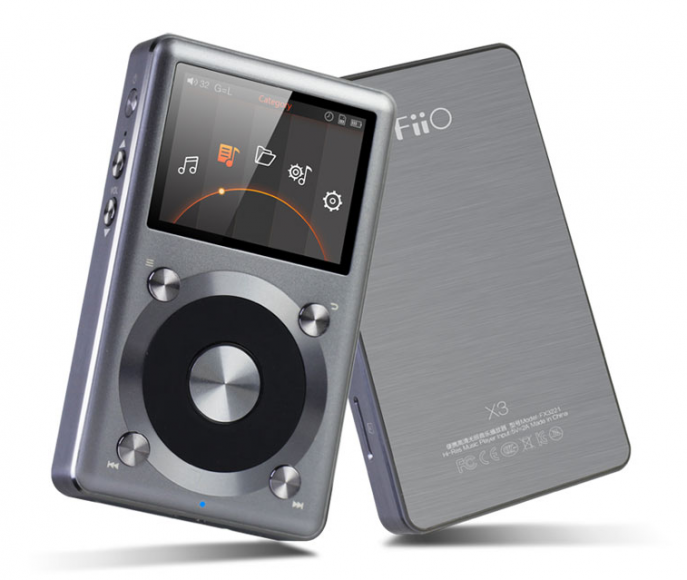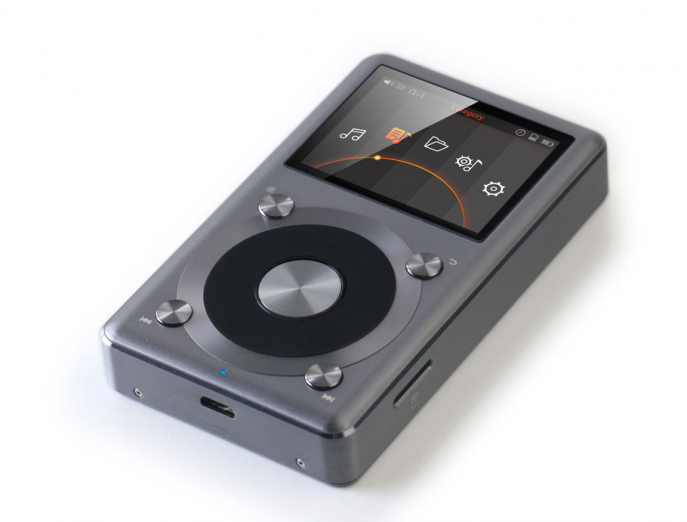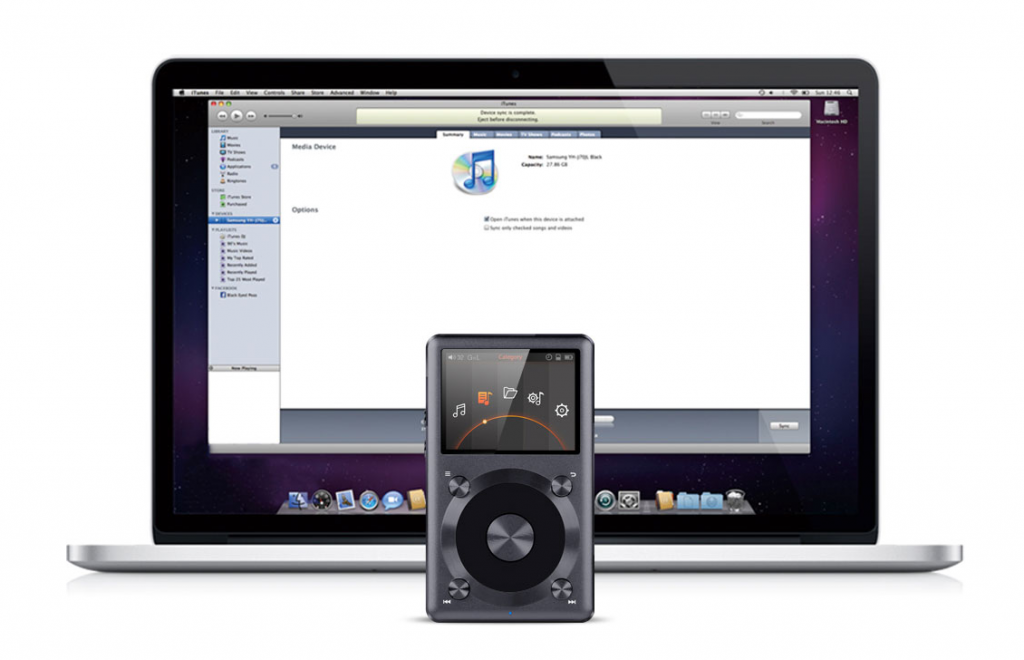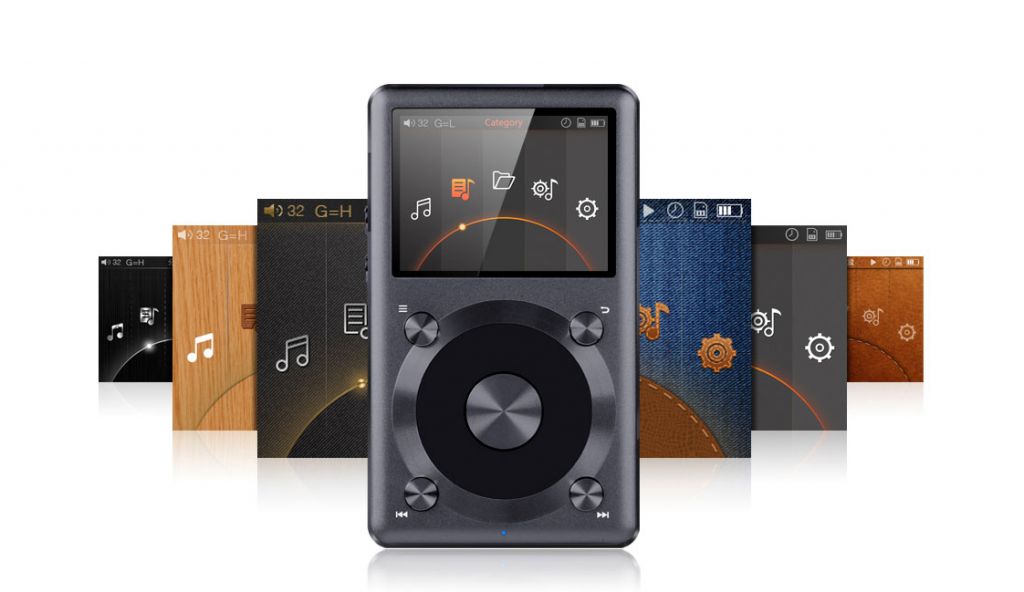The FiiO X3 was the harbinger of their DAP line. It was released in 2013, after years of delays, and was even cancelled at one point. The struggles this product line has had to overcome to reach this point in 2015, were enormous. From a market standpoint, it may have seemed that digital audio players were dying out due to multi-purpose smartphones, and that the audiophile players were many. The X3 essentially overcame adversity to become one of the most recognized audiophile players on the market today. It, along with new additions to the DAP lineup from FiiO, has created one of the most powerful names for headphone-philes today.
The company was created in 2007 by entrepreneur, and now CEO of FiiO, James Chung. James had many years of experience in the audio industry and saw issues that he wanted to rectify. One of the most glaring complications of the Chinese Hi-Fi industry that he witnessed were the use of counterfeit chips and homebrewed solutions copied off the legit ones. At one of the companies he worked at before starting FiiO, he and a team successfully engineered one of the first units to use a licensed digital chip in China for that time. The philosophy learned at that time applies to FiiO’s current lineup; all the units use name-brand components and licensed chips.

We have the FiiO X3 Second Generation (formerly called FiiO X3K) with us and the years of experience shows. It is one of the best FiiO audio players yet and we are excited to share what will redefine the market…again.
The FiiO X3 II is a compact package that draws inspiration from the X1. The X3 II is identical to the X1 in width and height, so from pictures online or a quick look at the units face-on, one would think that these two units were identical. In reality, that is far from the truth. Leaving aside the plethora of internal differences which this review will detail below, the X3 II is deeper (thicker) than the X1—this is important when shopping for cases and accessories, because one should not assume that these will fit the X3 II just because they fit the X1.
Engineering is the basis of FiiO’s products and it shows in the X3 II. Throughout the years, their precision and design have continuously gotten better, and this is no exception. The X1 and X3 had some flimsiness to them that did not quite match their market position of being premium audio devices. The X5 originally surprised me with its build; this was huge coming from the original X3. The X5 however, was plagued with a sub-sized screen, UI issues and daily usability issues. Now, just like how the X5improved on the past, the X3 II fixes many of those issues.

The improvements run throughout the entire unit. Whereas the X1 had a plastic back cover to its metal chassis, the X3 II is full metal. The biggest offender in visual fidelity was the quality of the outer build in the old FiiO’s. The metal front on the X1 was grainy in finish and had rough edges…it was like an outer cover that you snap on to a frame. The new generation unit from FiiO has a homogenous smoothening on the edges, and is uniform throughout. This design change on the body shell changes how it feels in the hand, and on close inspection of the unit…this separates luxury design from prototyping. The biggest changes do come in the physical usability options. They are the scroll wheel and buttons. The wobbly and low resistance scroll wheel used on the X1 and X5 has been replaced with a more coarse, stabilized one. The older scroll wheels felt like loose toys. The squishy buttons that would sometimes jam on the X1 are now more responsive and backed with a weight of authority. I don’t know if FiiO actually changed the buttons or the internal PCB switch for the buttons, but it definitely ‘feels’ slightly different. Overall, FiiO has made strides in improving the minute details on their units and the X3 II definitely shows these changes.
Moving past the physical build, we have the user-interface and its quality. The FiiO X3 II builds off the previous variants of FiiO’s operating system and has much more finesse now. Features such as favorites, playlists, and more, are now included with the device. The biggest thing for me is that they have made good on their promises to make the UI faster. Starting with the X5, every generation of devices past, have had a more responsive interface and the pattern doesn’t stop with the X3 II. It figuratively turns on a dime and gapless playback works without an issue or stutter.
Most of the changes to the interface happened behind the scenes. Some of the biggest issues people had with FiiO’s past devices were with library and music access. FiiO has fixed the library update bug and made the process more streamlined and faster. I haven’t had an issue using this on the X3 II whereas I’ve had it barely working on the X5. The settings for lockscreen and play options have also been made more useful. They actually give usable options for how you want to ‘use’ the device and they are rather intuitive as well. I recall looking at the usability options for the original X3 and noting how it seemed like they didn’t test the use of them before shipping the operating system.

I’m fairly jolly with the software but it does have its fair share of hiccups. FiiO is in a constant progress of updating their firmware and rolling out beta versions for people to test. While every version adds and fixes other stuff, they will often introduce new problems as well. On some versions, I would have late audio start or an amplifier relay that would stop working. Those are fixed now, but alas, another problem takes its place. The newest one is that the menu will show up twice when pressing the back button or where the device will not be detectable on the computer. All of these are fairly minor compared to the biggest issue; the X3 II ‘s PC DAC option. FiiO touts the PC DAC option on the X3 II quite fervently but it’s not an easy feature to use. To use the X3 II as a DAC with Windows computers, you need to undertake a long process. You have to first hunt down instructions to restart Windows into advanced mode and then to turn off driver enforcement. After, you have to download the USB driver and hope it installs. There are often problems with this step. And then, you need to exit the driver enforcement mode so malware doesn’t have a vulnerability to enter into. This is one of the most tiresome things I’ve had to do with the X3 II and FiiO’s other units. Many users have problems as well and diagnosing it and fixing it on individual computers isn’t always so simple.
I believe the next step for FiiO is to really double down on their software. There is a slight disconnect right now between what they are featuring and how well it honestly works. They have made great strides in this sector but I would like to see the PC DAC driver problem resolved and further improvements in music access/browsing. They are in the right direction and I think that in a few years, I’ll be happily writing about their immense achievements since the company founding in 2007.

The FiiO X3 II packs some serious punch in the technical specs. It has an Ingenic JZ4760B XBurst 600MHz CPU at the core of its operations. This low-power CPU has advanced audio output options and HD video abilities. FiiO obviously does not use all of its capabilities but the better responsiveness in the unit can be ascertained to be from this CPU and also firmware optimization. In terms of audio chips, it utilizes the highly regarded Cirrus Logic CS4398 DAC with Texas Instruments OPA1642/LMH6643 chips. The combination is certainly impressive for a $199 audio player; the CS4398 DAC is used in units up to the thousands of dollars. Indeed, while this is brilliant from a tech perspective, implementation really is the end game and will determine if it sounds good.
The unit has a standard headphone output, line output, SPDIF Coaxial out and USB out for audio. The most notable thing is that the line level output is 1.45 Vrms. This is slightly less than the 1.5 Vrms FiiO usually uses but it still poses an issue. Many speakers and stereo sets will clip, unfortunately, if you input this much into it. I’ve had to resort to using the headphone out with many car audio systems and home theatre setups, as the power of the line out was too much. There aren’t really many options to fix this, as most of the trouble occurs on non-audiophile setups like the kind I described. They just weren’t designed to receive that amount of power.

Now let’s talk sound quality of the X3 II. The unit carries a warm sound with a slightly dark background. The main quality though, would be its affinity for neutrality and how it attempts it better than most other similar priced devices by FiiO…the E12 and E18 being other sample units that strive for this.
The mid-range of the X3 II has a soft timbre. It takes the instruments and brings them to life, but in a more laid-back way. It’s like being in the desert with heat waves all around you, as opposed to a rainy thunderstorm. The instruments surround you with a slight blurring effect as it meshes and warms the music around you, as opposed to being sharp and a constant barrage. This is better for laid-back and passive listeners who want to enjoy music with say, a nice glass of scotch, while reading a book. Listening to Polina Gagarina’s A Million Voices” was quite a treat. The song achieved second place at one of the largest festivals in the world: Eurovision. Just like the unit, the song has a mesh of sonic movement happening around the X3 II while delivering powerful vocals and warm backing instruments. The singer had a powerful voice that the unit delivered quite clearly. The naturalness in the tonality, was the most apparent touch to it during my auditions. It has this fuzzy affliction to the human voice that makes it a bit more homely as opposed to cold and sharp. The voice of the singer wasn’t as sharp as I was expecting or wanted; it was a bit more delicate to the ear. That is one of the slight tuning downfalls that I would have liked rectify from FiiO’s other budget line products. FiiO has a general policy to tune down the harshness of the mid vocals. I was told in the past by their representatives that this was done intentionally due to the mastering quality – and its faults – generally found in China.
The enigmatic vocals offer a hint of intimacy. The X3 II brings you a bit closer to the music in a way that differs from the norm. Whereas most higher end products blast you with detail, finesse, and tuning, the X3 second generation seeks to give proximity and comfort to the world of audio. It’s a feeling akin to being wrapped in your bed warm and snug on a cold winter day. Listening to Fleetwood Mac’s Little Lies” provided some of this affection. The soft and enclosing sound really puts you in a mood to just lay down and relax. I do realize that Fleetwood Mac’s songs already sport this feeling and mood. It’s just that the X3 II offers an additional vibrancy to it that differs it from more active sounding units.
With that said, the X3 II does suffer from some faults on the technical side. It lacks transparency from the standpoint that you can clearly hear the unit. The cozy mid-range I keep talking about is intensely artificial. You can hear a bit more distortion and noise that you wouldn’t otherwise hear (I’ve checked with different combos and units). The X3 II also has faults on the quiet passages in songs; it’s just not quiet enough. I’ve tried many headphones and sure enough, quieter or supposedly silent parts of songs on other units, still retain noise on the X3 II. The unit has a set of impedance ranges it officially supports. Going out of that range leads to compatibility issues in the form of more noise and sometimes, distortion. With my investigations, I find that it is the unit that is creating this noise, on some of my more sensitive IEMs’. It isn’t a lot, but on higher end headphones that are sensitive, it is remarkbly easy to tell that the X3 II is slightly noisy at times. Overall, I would say that most of the downfalls of the unit are in how fabricated the sound is. This isn’t necessarily always bad, but it does take away from the experience at times.
The only thing I would say about this is that the unit is still quite remarkable. Many of my criticisms on the sound are pretty normal for units at the $199 price range that are as multi-function as this one. It has its faults, but it also carries baggage that take up a lot of electronic PCB real-estate. If you wanted all the sonic faults fixed at this price range, you would really have to get a dedicated amp or DAC.

In conclusion, the FiiO X3 II offers itself as another phenomenal package. I see this unit being very popular in the future thanks to FiiO’s supportive updates and excellent customer support. They’ve actively taken in comments and suggestions from the community and integrated it into their products. The X3 II is one of the most current realizations of this consumer-feedback based company. The swiss army DAP continues to impress with its abilities and at a $199 price range, there is nothing I can honestly say without seeming like a smart-ass. The problems are there, but this knockout product is in town and down to rumble!















Reply
Want to join discussion?
Feel free to contribute!